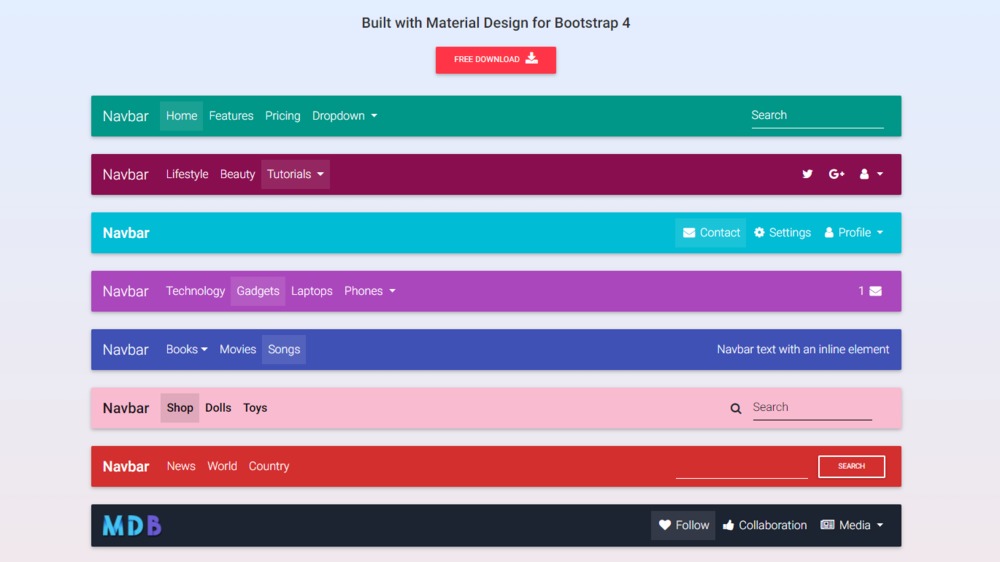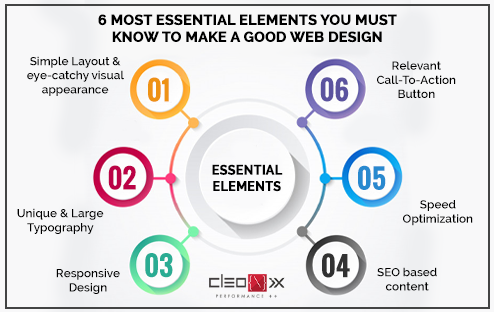In the digital age, having a website is no longer enough. To succeed online, your website must be a conversion powerhouse. A high-converting website can turn visitors into loyal customers and boost your sales. In this comprehensive guide, we'll explore the essential elements that make a website not just attractive, but highly effective in driving conversions.
Understanding the Basics
When we talk about a high-converting website, we're referring to a site that's designed with the primary goal of encouraging visitors to take specific actions, whether that's making a purchase, signing up for a newsletter, or filling out a contact form. Let's dive into the fundamental elements that make this possible.
Converting Website Design Features
The first and foremost element is your website's design. It should be visually appealing, but it's more than just aesthetics. It needs to guide the visitor's eye and prompt them to take action. Here, responsive design plays a crucial role, ensuring your site looks great and functions seamlessly on all devices.
Mobile-Responsive Design
Mobile internet usage is on the rise. Having a website that's optimized for mobile users is not a choice but a necessity. Studies have shown that mobile-responsive websites have a significantly higher conversion rate compared to those that aren't mobile-friendly. Ensure your website is accessible and user-friendly across all devices.
Optimizing Layouts for Different Devices
Consider the user experience on various devices. Mobile users have different needs compared to desktop users. Tailor your layout and content to suit these different contexts.
Remember, a user who has a great experience on your mobile site is more likely to convert into a paying customer. Optimizing for mobile users is not just a trend; it's a necessity.
Crafting Effective Calls to Action
Your website's call-to-action (CTA) buttons are your secret conversion weapons. These buttons guide users on what actions to take next. To create effective CTAs:
-
Use action-oriented language: Instead of "Click here," use phrases like "Get Started" or "Claim Your Offer."
-
Make them visually striking: Use contrasting colors and bold typography to ensure they stand out. You want your CTA buttons to be eye-catching.
-
Place CTAs strategically: Position them prominently on your pages, especially where visitors make decisions.
A well-crafted CTA can make all the difference. It tells your visitors what to do and nudges them toward taking the desired action, whether that's making a purchase, signing up for a newsletter, or requesting a quote.
User Experience (UX) and Website Success
Creating Intuitive Menus
Your website's navigation should be intuitive, guiding users seamlessly through your content. Clear and well-structured menus are key to providing a smooth user experience.
User-Friendly Navigation
Consider the user's journey through your website. Is it easy to find what they're looking for? Are your menu labels clear and logical? A user-friendly navigation system helps reduce bounce rates and keeps visitors engaged.

Creating Intuitive Menus
When creating menus, use language that your audience understands. Keep menus organized and minimize the number of options. Intuitive menus help users quickly locate the information or products they're interested in.
Remember, users don't want to spend a lot of time figuring out how to use your site. A well-organized and intuitive menu system simplifies their journey and boosts their overall experience.
Building Trust with Testimonials
Trust is a vital element of a high-converting website. Users are more likely to take action if they trust your brand. Testimonials are a powerful tool to build this trust.
Trust Elements
Ensure your website includes trust signals such as security badges and certifications. These symbols communicate that your site is secure and trustworthy. In an era of increasing online fraud, these elements can make a significant difference in persuading visitors to convert.
Building Trust with Testimonials
Showcase positive feedback from your satisfied customers. Real stories and experiences can sway potential customers in your favor. People trust other people, and hearing about positive experiences from past customers builds confidence in your brand.
Data-Driven Conversion Optimization
Using Analytics for Insight
Measuring the performance of your website is essential to optimizing for conversions. Tools like Google Analytics can provide valuable insights.
Measuring Website Performance
Track metrics such as bounce rate, time on site, and conversion rate. This data offers a snapshot of your website's effectiveness. High bounce rates may indicate that your landing page isn't engaging, while a low conversion rate could signal issues with your CTAs or forms.
Analytics can reveal which pages are the most popular, where visitors are dropping off, and how they move through your website. Armed with this information, you can make data-driven decisions to improve your site's performance.
A/B Testing for Better Conversions
A/B testing involves creating two versions of a webpage (A and B) to test which one performs better in terms of conversions.
A/B Testing for Better Conversions
This method allows you to experiment with different elements of your website, like the color of your CTA buttons or the placement of key content. A/B testing can lead to incremental improvements in your conversion rates.
For example, if you're unsure whether a green or red CTA button works better, you can create two versions of your page, one with a green button and one with a red button. Then, by analyzing user interactions, you can determine which color results in more clicks and conversions. This data-driven approach helps you refine your website over time, improving its conversion rate.
Content and Its Impact
Effective Use of Multimedia
Content on your website isn't limited to text. Visual elements, such as images, videos, and infographics, play a significant role in capturing visitor attention.
Effective Use of Multimedia
Visual storytelling can be incredibly engaging. Use multimedia to convey your brand's story effectively. High-quality images can showcase your products or services. Videos can provide in-depth explanations or customer testimonials. Infographics can present complex data in an easily digestible format.
Remember, different users prefer different types of content. Some might be more visual, while others prefer written content. By offering a mix of multimedia, you cater to a broader audience and increase the chances of engagement and conversion.
Conclusion
In conclusion, creating a high-converting website involves a strategic blend of design, user experience, trust-building, data analysis, and engaging content. By focusing on these essential elements, you can transform your website into a conversion machine, driving more sales and business growth.
Are you ready to boost your website's conversions? Contact Singh Web Design today for expert assistance in optimizing your website for success.
Additional Resources
- The Power of Responsive Design: Learn more about the significance of mobile-responsive web design.
- Crafting Effective CTAs: Dive deeper into creating compelling calls to action.
- Building Trust with Testimonials: Discover how to use testimonials to build trust on your website.
- A/B Testing Made Easy: Explore the world of A/B testing for conversion rate optimization.
With these insights, you're well on your way to creating a website that not only impresses visitors but also drives results. Stay tuned for more valuable web design and SEO tips from Singh Web Design.

